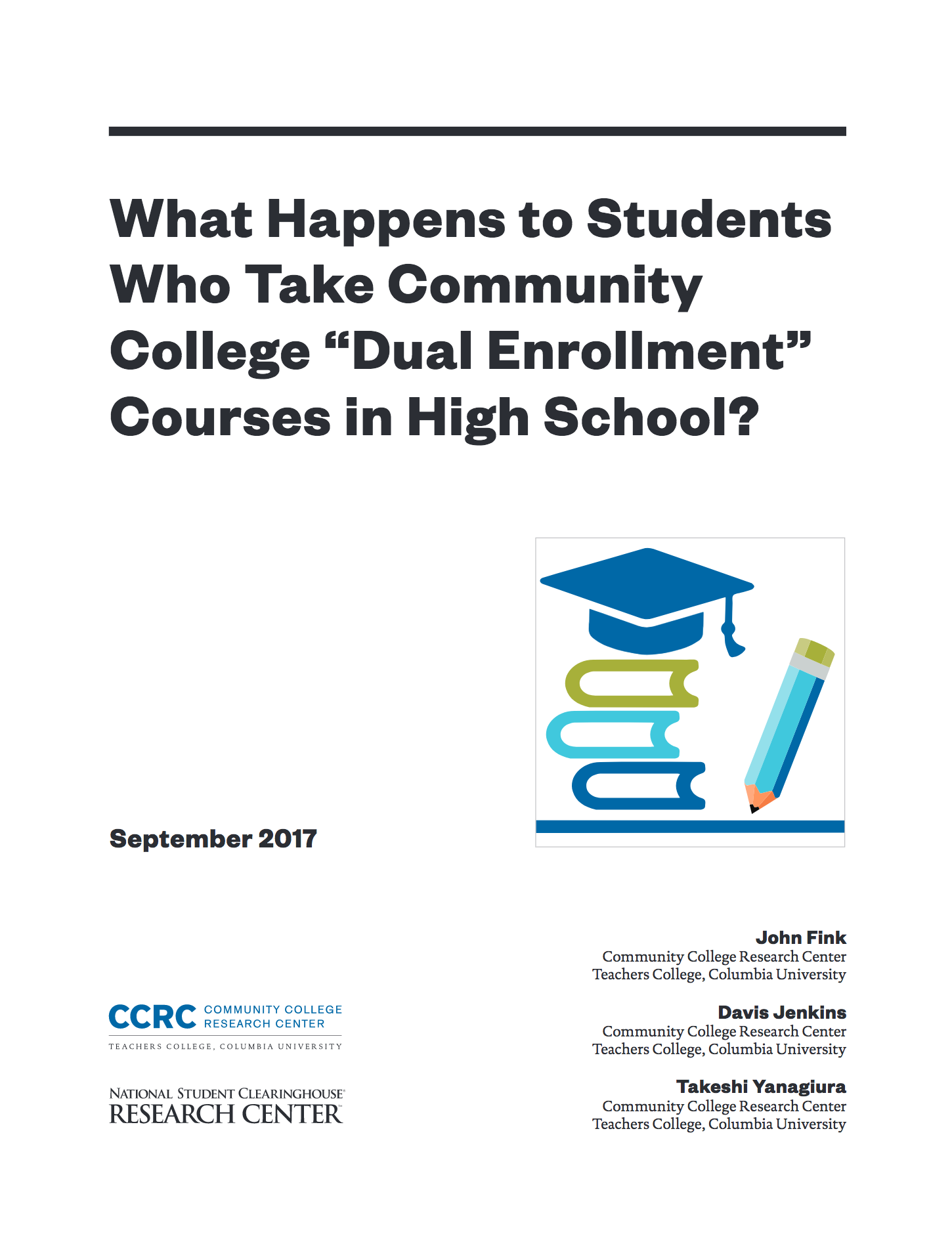What Don’t We Know About Dual Enrollment? Student outcomes, a TC report finds

The answers are, essentially, “yes” and “it’s not clear,” according to a new report by TC’s Community College Research Center.
The number of students taking college courses while they are in high school has grown dramatically over the past two decades, particularly at community colleges, according to the study, “What Happens to Students Who Take Community College ‘Dual Enrollment’ Courses in High School?” – but many colleges and states do not track participants’ outcomes. Using student enrollment and degree records from the National Student Clearinghouse, CCRC researchers John Fink, Davis Jenkins and Takeshi Yanagiura (TC student and graduate research assistant) were the first to look state by state at who enrolls in community college “dual enrollment” courses and what happens to them after high school.
The study tracked more than 200,000 high school students who first took a community college course in fall 2010 for six years, through summer 2016 (five years after high school). Eighty-eight percent of these students continued in college after high school, and most earned a certificate or degree or transferred from a two-year college to a four-year college within five years.
“If colleges are to improve rates of college-going and completion by dual enrollment students generally, and those from disadvantaged backgrounds in particular, they will need to monitor their dual enrollment students more closely, both while they are still in high school and after they graduate.”
Nationally, 15 percent of all 2010 community college entrants were high school dual enrollment students, with the proportion ranging from 1 percent in Georgia to 34 percent in Kentucky. Among former dual enrollment students who started at community college after high school, the percentage who earned a certificate or degree within five years ranged from 28 percent in West Virginia to 64 percent in Florida.
There were also big variations state by state in the type of college that former dual enrollment students attended after high school and how many of those students completed a college credential. In many states there also were big disparities between lower and higher income students in credential completion rates.
Despite the potential benefits of dual enrollment, the research raises important questions about why student outcomes varied substantially by state and often by income.
“If colleges are to improve rates of college-going and completion by dual enrollment students generally, and those from disadvantaged backgrounds in particular, they will need to monitor their dual enrollment students more closely, both while they are still in high school and after they graduate,” the authors write. “We encourage colleges and states to monitor dual enrollment students, both while they are in high school and after they graduate, using the measures and results presented in this report to benchmark their performance nationally and by state. Doing so would be a good way to motivate efforts to work with partner high schools in order to more fully realize the potential of dual enrollment to increase college success and affordability for all students and improve return on investment for states.”
Published Wednesday, Sep 27, 2017